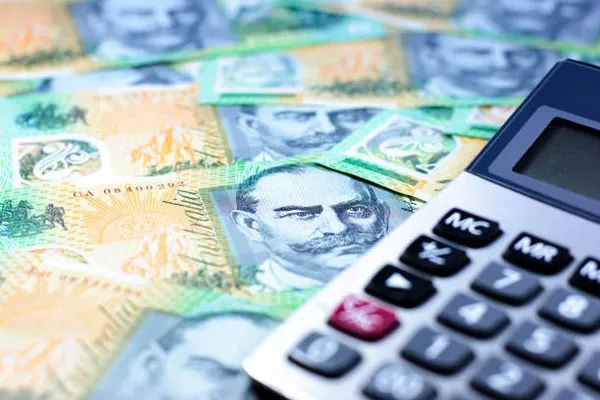The $20 Australian note, with its distinct orange hue and notable portraits, holds a special place in the hearts of collectors. While modern currency is primarily valued for its face value, certain $20 notes in Australia can be worth significantly more. The value of these notes is determined by a variety of factors, including rarity, condition, historical significance, and unique features such as printing errors. In this comprehensive guide, we will delve into the specifics of which $20 Australian notes are valuable, exploring the nuances that make these pieces coveted by collectors.
Historical Context of the $20 Australian Note
Introduced in 1966, alongside the decimalization of Australian currency, the first $20 notes featured portraits of Sir Charles Kingsford Smith and Lawrence Hargrave, two pioneers of Australian aviation. These notes were part of the first series of decimal currency, designed by Gordon Andrews and printed by the Reserve Bank of Australia (RBA). Over the years, the $20 note has undergone several design changes, including a significant update in 1994 to incorporate polymer technology, making Australia a pioneer in the use of polymer banknotes.
Key Factors Influencing the Value of $20 Notes
1. Rarity
Rarity is one of the primary determinants of a note’s value. Notes that were printed in limited quantities or those from early print runs tend to be more valuable. For example, the first series of $20 notes printed in 1966, particularly those with low serial numbers, are highly sought after by collectors.
2. Condition
The condition of a note, often referred to as its grade, significantly impacts its value. Notes are graded on a scale ranging from Poor to Uncirculated. Uncirculated notes, which show no signs of wear and tear, command the highest prices. Notes in Fine or Very Fine condition, while still collectible, are less valuable than their uncirculated counterparts.
3. Serial Numbers
Unique or low serial numbers can greatly increase the value of a $20 note. Notes with serial numbers starting with “AA” from the first prefix of a new series or those with particularly low numbers (e.g., 000001) are especially prized. Additionally, notes with “fancy” serial numbers, such as repeating digits (e.g., 123456 or 111111), also attract collector interest.
4. Printing Errors
Printing errors can make a note exceptionally valuable. Common types of errors include misprints, ink smudges, and misalignments. Such errors are rare, making any note bearing them a unique collectible piece.
Valuable $20 Australian Notes
1. 1966 First Issue Decimal $20 Note
The 1966 decimal $20 note, part of the first series of decimal currency, is highly valued, especially in pristine condition. Notes from this series with low serial numbers or unique prefixes are particularly sought after. For example, a 1966 note with the serial number starting with “ZAA” (indicating it was part of the first run) can fetch a high price at auction.
2. 1994 Polymer $20 Note
In 1994, Australia introduced polymer banknotes, replacing paper notes. The first polymer $20 note featured the same designs as its paper predecessor but offered enhanced security features and durability. Notes from the early print runs of this series, particularly those with unique serial numbers or errors, are valuable. For example, a 1994 polymer $20 note with the serial number “AA 94” can be highly sought after.
3. Commemorative Issues
From time to time, the RBA releases commemorative notes to mark significant events or anniversaries. These notes, often produced in limited quantities, are highly collectible. An example is the 2015 commemorative $20 note issued to celebrate the centenary of the ANZAC landing at Gallipoli. These notes, with special design elements and limited print runs, can be significantly more valuable than standard issues.
Assessing and Collecting Valuable $20 Notes
1. Authentication
Authentication is crucial when assessing the value of a banknote. Collectors should ensure that notes are genuine and not counterfeit. Professional grading services can provide authentication and grading, giving collectors confidence in the legitimacy and condition of their notes.
2. Grading
Professional grading services, such as those provided by the Australian Numismatic Dealers Association (ANDA), can assess the condition of a note and assign it a grade. This grade is a critical factor in determining the note’s market value. Uncirculated notes (graded as UNC) or those with minimal handling marks (graded as AU or About Uncirculated) are most valuable.
3. Storage and Preservation
Proper storage is essential to maintain the condition of valuable banknotes. Notes should be stored in protective sleeves or holders to prevent damage from handling, moisture, and light exposure. Collectors should also avoid folding or writing on the notes, as such actions can significantly reduce their value.
4. Market Trends
Staying informed about market trends is essential for collectors. The value of banknotes can fluctuate based on collector demand, economic conditions, and the discovery of new specimens. Regularly consulting auction results, dealer listings, and collector forums can provide insights into current market values and trends.
Conclusion
The world of Australian $20 banknotes is rich with history and opportunity for collectors. From the early decimal notes of 1966 to the innovative polymer issues and special commemoratives, various factors can elevate the value of these notes. Collectors who pay attention to rarity, condition, serial numbers, and printing errors can uncover significant value in their collections.
Whether you are a seasoned numismatist or a novice collector, understanding what makes certain $20 Australian notes valuable is key to building a meaningful and potentially profitable collection. By focusing on authentication, professional grading, proper storage, and staying abreast of market trends, collectors can navigate the fascinating landscape of Australian currency with confidence and expertise.


